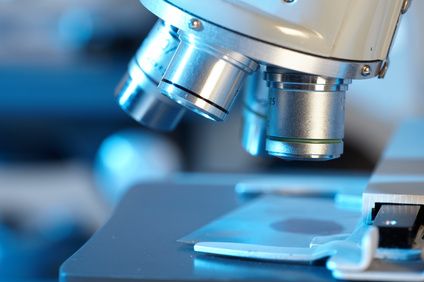
(Vienna, 20 May 2019) Many patients with chronic diseases such as cancer, AIDS or auto-immune diseases also suffer from a mysterious additional condition, cachexia. This is a highly complex and poorly understood syndrome that leads to uncontrollable weight loss. Shrinking fat reserves and the breakdown of muscle tissue result in physical weakness. In a recent study, scientists from the CeMM Research Center for Molecular Medicine of the Austrian Academy of Sciences describe the molecular mechanisms of cachexia in viral infections and identify the surprising role of immune cells.
Cachexia is a syndrome that is influenced by many factors and occurs in patients with chronic infections such as HIV, tuberculosis and malaria. Additionally, between 50% and 80% of cancer patients are affected by cachexia (Argiles JM et al. Nature Reviews Cancer 2014). Due to reduced food intake and a change in their metabolism, patients involuntarily lose weight and physical strength. Fat reserves and skeletal muscle mass are increasingly used up, a process that cannot be reversed by nutritional supplementation. Cachexia significantly compromises patients' quality of life and diminishes the efficacy of ongoing treatments.
Working in collaboration with scientists from the University of Graz, the Medical University of Vienna and partners from Germany, Switzerland and the USA, the research group led by Andreas Bergthaler at the CeMM has discovered a mechanism that explains how chronic viral infections can induce cachexia. The results of the study were published in leading journal Nature Immunology.
Using animal models, the researchers were able to identify central molecular actors that induce cachexia in chronic infection. Like cancer-related cachexia, the weight loss triggered by the viral infection could only partially be explained by reduced food intake and could not be prevented by nutritional supplementation.
The investigations further showed that the viral infection led to a major reorganisation of the architecture of adipose tissue. This was associated with the activation of lipolysis, a molecular cascade of processes that the body uses to mobilise its fat deposits. "The surprising thing was", says Hatoon Baazim, lead author of the study and PhD student at the CeMM, "that none of the inflammatory mediators known to trigger cachexia in cancer, played any role in our infection study."
When looking for other possible mechanisms, the scientists found that a specific type of immune cell is responsible for triggering cachexia: CD8 T-cells. These immune cells, which are also known as T killer cells, normally detect cells that are infected with a virus or cancer cells and kill them off. For the first time, this study was able to show that CD8 T-cells play a central role in triggering cachexia in infections. A role is also played by additional signals of the antiviral cytokine Type I interferon, an endogenous immune system messenger substance, and detection of the virus by the CD8 T-cells.
The present study provides information about the complex inflammatory processes and metabolic changes in infection-associated cachexia and provides the international research community with a valuable model for further study of the molecular mechanisms of cachexia. This might contribute to better understanding of infections such as AIDS, tuberculosis and malaria and other parasitic diseases that induce cachexia. Says Andreas Bergthaler: "Moreover, we are convinced that future research making a comparative study of cachexia related to infections and cancer will provide a key to achieving urgently needed advances in our understanding of this still highly mysterious condition." New basic research findings of this kind could stimulate the development of innovative therapeutic strategies to mitigate cachexia and the associated life-threatening chronic diseases.
Service: Nature Immunology
"CD8+ T cells induce cachexia during chronic viral infection"
Hatoon Baazim, Martina Schweiger, Michael Moschinger, Haifeng Xu, Thomas Scherer, Alexandra Popa, Suchira Gallage, Adnan Ali, Kseniya Khamina, Lindsay Kosack, Bojan Vilagos, Mark Smyth, Alexander Lercher, Joachim Friske, Doron Merkler, Alan Aderem, Thomas H. Helbich, Mathias Heikenwälder, Philipp A. Lang, Rudolf Zechner, Andreas Bergthaler; published in Nature Immunology on 20.5.2019. DOI: 10.1038 / s41590-019-0397-y
This study was funded by the European Research Council (ERC), the Austrian Academy of Sciences, the Austrian Science Fund (FWF), the German Research Association (DFG) and the US National Institute of Health.